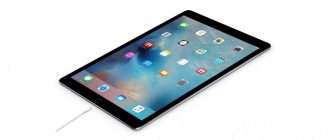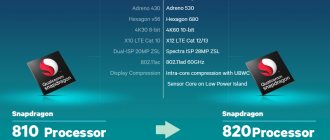Which version of the flagship Galaxy S8 shows better results in benchmarks? Is there a performance difference between Galaxy S8 and Galaxy S8+ with a single chip?
As in past years, Samsung has released flagship smartphones in two configurations. A version with the proprietary Exynos 8895 chip with an updated Mali-G71 graphics accelerator is supplied to the international market. It is manufactured on a 10nm process technology, which provides higher performance and energy efficiency. In the US and China, an option is sold with the powerful Snapdragon 835 processor from Qualcomm, which also uses a 10nm process technology.
On paper, both chipsets look very similar as they use the same technologies. And this is really important, because users around the world cannot choose which version to purchase. As tests show, there are still differences.
Benchmark tests
Test results in benchmarks Geekbench, AnTuTu and others
AnTuTu 8
AnTuTu Benchmark measures the speed of CPU, GPU, memory and other system components
| CPU | 58492 | 81260 |
| GPU | 54965 | 109179 |
| Memory | 29058 | 49789 |
| UX | 32663 | 38165 |
| Total score | 173012 | 274867 |
GeekBench 5
GeekBench shows single-threaded and multi-threaded CPU performance
| Image compression | 99.55 Mpixels/s | 95.3 Mpixels/s |
| Face detection | 14.55 images/s | 13.3 images/s |
| Speech recognition | 26.3 words/s | 31.5 words/s |
| Machine learning | 20.35 images/s | 24.1 images/s |
| Camera shooting | 15.55 images/s | 14.5 images/s |
| HTML 5 | 1.52 Mnodes/s | 1.99 Mnodes/s |
| SQLite | 475.7 Krows/s | 534.8 Crows/s |
Galaxy S8+ on Snapdragon 835 and Exynos 8895: benchmarks
Long before the release of the Galaxy S8+, everyone understood that the smartphone would work at the speed of light, as befits a galactic flagship. A comparison of the Snapdragon 835 and Snapdragon 821 chipsets (on test platforms) conducted by Qualcomm clearly showed that the 835 Dragon is almost one and a half times faster than its predecessor.
Samsung conducted its own tests, which brought the Galaxy S8+ on Exynos 8895 to the absolute leaders of GeekBench. The main intrigue remained: which of the Galaxy S8+ configurations, with Snapdragon 835 or Exynos 8895, will ultimately be faster?
Galaxy S8+ in GeekBench 4: CPU testing
Testing of central processing units (CPUs) of smartphones is traditionally carried out using the GeekBench 4 benchmark. The pure speed of the cores is assessed here, without being closely tied to the operating system and the amount of RAM.
Until now, among Android smartphones, the fastest in GeekBench single-core were Huawei smartphones on the Kirin 960 chipset. Both Galaxies were able to surpass the result of the record holder, and the best in the internal confrontation was the Exinos 8895. iPhone 7 remained in the GeekBench 4 single-core position as the leader, and by a very serious margin.
GeekBench 4 (single-core)
In multitasking mode, the balance of power was similar: smartphones on the Kirin 960 were ahead of the rest. In GeekBench 4 multi-core, they were ahead of the iPhone, which is not enough stars from the sky in this benchmark. The Galaxy S8+ on Exinos 8895 was able to surpass the performance of the Chinese flagship from the fall of 2016 and become the absolute best. Galaxy S8+ on 835 Dragon showed a more modest result and took third place, right after Huawei Mate 9.
GeekBench 4 (multi-core)
Galaxy S8+: graphics adapter testing
The GFX and BaseMark X tests test the speed of the graphics adapter. Last year, Adreno 530 was faster than Mali-T880. A similar balance of power was predicted for the new season, but the forecast did not come true. If the Galaxy S7 on the Exynos 8890 was inferior to the version on the S820 in almost all graphics tests, then the Eighth Galaxy on the home-made Samsung chipset made up the gap and took the lead.
The twenty-core Mali-G71 MP20 outperformed the Adreno 540 in all synthetic tests, and in some the gap was quite impressive. Apparently, the huge number of cores in the Mali-G71 has an effect. Nobody knows how many cores are in the Adreno 540, because Qualcomm traditionally keeps this information under seal.
GFX 3.1 Manhattan (1080p offscreen)
GFX 3.1 Manhattan (onscreen)
GFX 3.1 Car Scene (offscreen)
GFX 3.1 Car Scene (onscreen)
BaseMark X
Basemark ES 3.1/Metal
Galaxy S8+ in AnTuTu 6: overall smartphone speed
The latest test for the Galaxy S8+ on Snapdragon 835 and Exynos 8895 was the popular and almost legendary Antutu. Antutu evaluates the overall performance of a smartphone. The result is influenced not only by the processor, but also by RAM (volume, type), firmware, operating system, internal memory, and interfaces.
Why are we talking about this? Yes, because with a “modest” 4 GB of RAM, the Galaxy S8+ shows excellent results, regardless of the processor. Yes, the option for our market (on Exinos 8895) turned out to be a little faster and took first place, but that’s not even the main thing. Another point is much more interesting.
Excellent scores scored with 4 GB of RAM. One can only guess how high the Galaxy's result would be if it received 6 gigabytes of RAM. In the future, when comparing results in Antutu with other flagships, with the same Xiaomi Mi 6, we recommend not to forget about this nuance. Yes, phones with six gigs of RAM may be faster, but the Galaxy S8+ scores its points with 4 gigs, which indicates excellent software optimization.
AnTuTu 6
Galaxy S8+: instead of results
Is it worth stating the obvious and talking about which Galaxy is faster? We think it's not worth it. Instead of an afterword and summary, we offer links to publications (detailed review of the Galaxy S8+ based on GSMArena materials) that may interest you.
1. Galaxy S8+: characteristics and benchmark tests. 2. Samsung Galaxy S8+: screen and battery tests. 3. Galaxy S8+: what's new in the software? 4. Galaxy S8+ camera: algorithms, HDR, comparison with S7. 5. Review of Samsung Galaxy S8+: Results. Key features.
Specifications
Comparison table of characteristics of Exynos 8895 and Snapdragon 835
| Architecture | 4x 2.314 GHz – Exynos M2 4x 1.69 GHz – Cortex-A53 | 4x 2.45 GHz – Kryo 280 (Cortex-A73) 4x 1.9 GHz – Kryo 280 (Cortex-A53) |
| Number of Cores | 8 | 8 |
| Frequency | 2314 MHz | 2450 MHz |
| Set of instructions | ARMv8-A | ARMv8.1-A |
| L1 cache | 64 KB | 128 KB |
| L2 cache | 2 MB | 2 MB |
| Technical process | 10 nm | 10 nm |
| Number of transistors | 3 billion | 3 billion |
| TDP | 5 W | 9 W |
| GPU | Mali-G71 MP20 | Adreno 540 |
| Architecture | Bifrost | Adreno 500 |
| GPU frequency | 900 MHz | 710 MHz |
| Computing blocks | 20 | 2 |
| Shader blocks | 320 | 256 |
| FLOPS | 349 Gflops | 558 Gflops |
| Vulcan version | 1.0 | 1.1 |
| OpenCL version | 2.0 | 2.0 |
| DirectX version | 11 | 12 |
| Memory type | LPDDR4X | LPDDR4X |
| Memory frequency | 1866 MHz | 1866 MHz |
| Tire | 2x 16 Bit | 2x 32 Bit |
| Bandwidth | Up to 29 Gbps | Up to 29.8 Gbps |
| Volume | Up to 4 GB | Up to 8 GB |
| Neural processor | No | Hexagon 682 |
| Drive type | UFS 2.1 | UFS 2.1 |
| Max. display resolution | 4096 x 2160 | 3840 x 2160 |
| Max. camera resolution | 1x 28MP, 2x 16MP | 1x 32MP, 2x 16MP |
| Video recording | 4K at 120FPS | 4K at 30FPS |
| Playing video | 4K at 120FPS | 4K at 60FPS |
| Codec support | H.264, H.265, VP9 | H.264, H.265, VP9 |
| Audio | 192 kHz/24 bit | Qualcomm aptX, Qualcomm Aqstic |
| Modem | – | X16 LTE |
| 4G support | LTE Cat. 16 | LTE Cat. 16 |
| 5G support | No | No |
| Download speed | Up to 1000 Mbit/s | Up to 1000 Mbit/s |
| Download speed | Up to 150 Mbit/s | Up to 150 Mbit/s |
| WiFi | 5 | 5 |
| Bluetooth | 5.0 | 5.0 |
| Navigation | GPS, GLONASS, Beidou | GPS, GLONASS, Beidou, Galileo, QZSS, SBAS |
Samsung Exynos 8895 vs Qualcomm Snapdragon 835: comparison of mobile processors
In order to be able to work with many applications and run complex games on your smartphone, it is important to buy a powerful processor compatible with a specific gadget model. The processors in question belong to the eight-core category, which makes them quite powerful. Both of them support 64-bit OS and have a thin technological process (10 nm). They are equipped with a built-in LTE module, which allows you to access the Internet without connecting to Wi-Fi, and support big.little technology, which improves performance when performing a large number of operations simultaneously. Both models have 8 threads of execution; their kernels do not support simultaneous execution of two threads. They have the same RAM speed – 1866 MHz. Both processors also support dynamic frequency scaling, which helps save energy.
At the same time, a comparison of models by technical parameters reveals a large number of differences between them, many of which indicate in favor of the Qualcomm Snapdragon model:
- The best clock rates. It has 4 cores with a frequency of 2.45 GHz and 4 cores with an indicator of 1.9 GHz. The numbers for the Samsung processor are 2.3 and 1.7, respectively.
- Higher GPU frequency (710 MHz versus 546).
- Availability of an out-of-order execution option, which allows you to run cycles that are idle due to delays.
- Significantly better efficiency in floating point calculations.
- Slightly better download rate (1024 Mbit/sec versus 1000).
- This is one of the very few models that allows you to take a screenshot of the screen of your active device.
The Samsung processor also has an advantage over its competing model: it supports HMP, a more advanced modification of big.little technology that extends battery life. It is supported only by a small percentage of mobile processors. The technology allows you to activate all the cores of the device in parallel or only one of them to perform low-intensity tasks.
Since most of the parameters of these models are identical or differ slightly, they can be considered equivalent to each other. For those who load games frequently, the Snapdragon will be better suited due to its slightly better performance specs. This is consistent with the results of Geekbench 5 single- and multi-core tests, in which the cards received almost identical ratings with a slight advantage in favor of Snapdragon. In addition, game creators often optimize them specifically for it.
Functions
The system on a chip (SoC) has an integrated LTE cellular chip. LTE can download at faster speeds than older 3G technologies.
Download speed is a measurement of Internet connection bandwidth, representing the maximum data transfer speed at which a device can access online content.
Dynamic frequency scaling is a technology that allows the processor to save power and reduce noise when it is under light load.
NX bit helps protect your computer from virus attacks.
NEON provides faster processing of multimedia data, such as MP3 listening.
AES is used to speed up encryption and decryption.
Which Samsung is better for gaming?
However, the GPU is one area where things are expected to get sharper as the Exynos 2200 has its own GPU for the first time. The GPU is built in collaboration with AMD and uses RDNA2 graphics cores sourced from desktops and consoles.
All you have to do is choose which processor is right for you.
Therefore, we should expect the Exynos 2200 to outperform the Snapdragon 8 Gen 1 in many ways. Finally, even in graphics, Korean processors will have an advantage. Samsung is essentially putting desktop and PS5 technology into the Exynos chipset (albeit with reduced power consumption, fewer cores, and other assumptions). But this is just a trial run, so most likely the system will not work 100%.
The Exynos 2200 is Samsung's first mobile chipset with AMD graphics, making it an important release in the Exynos-Snapdragon rivalry. According to Qualcomm, the new chipset's GPU offers 30% better performance and 60% better performance with the Vulkan API. But it is the use of new AMD technology in Exynos that is of much more interest.
Which processor is better?
Parameters and functionality indicate how similar these processors are. While the Exynos 8895 outperforms the Snapdragon 835 in some cases, there are other situations where the Snapdragon SoC is ahead.
Both processors are expected to power many devices expected to hit the market this year, including Samsung's next flagship smartphone, the Galaxy S8. Presumably, we will see the Snapdragon 835 in Samsung's new US version, while in the international version of the mobile phone we will be able to see the Exynos 8895 chip.
Petitions against Exynos
These differences, especially in recent years, have led enthusiasts to call for Samsung to offer Snapdragon-powered versions in more markets. These calls are understandable, because you don’t want to buy a device that is obviously weaker than in a neighboring country. Some enthusiasts have even posted a petition calling on Samsung to either scrap the Exynos variant or sell it at a discounted price .
In the new Galaxy S22 line, we will continue to see Exynos versus Snapdragon . These will be Exynos 2200 and Snapdragon 8 Gen 1. But this year is the most important in a long time for the rivalry between these chipsets.
Qualcomm and Samsung are using the same CPU configuration for their 2022 flagship processors, featuring one Cortex-X2 core for heavy tasks, three Cortex-A710 cores for general tasks, and four Cortex-A510 cores for light tasks. Otherwise, the CPU differences will be insignificant and everything can only come down to optimization.











